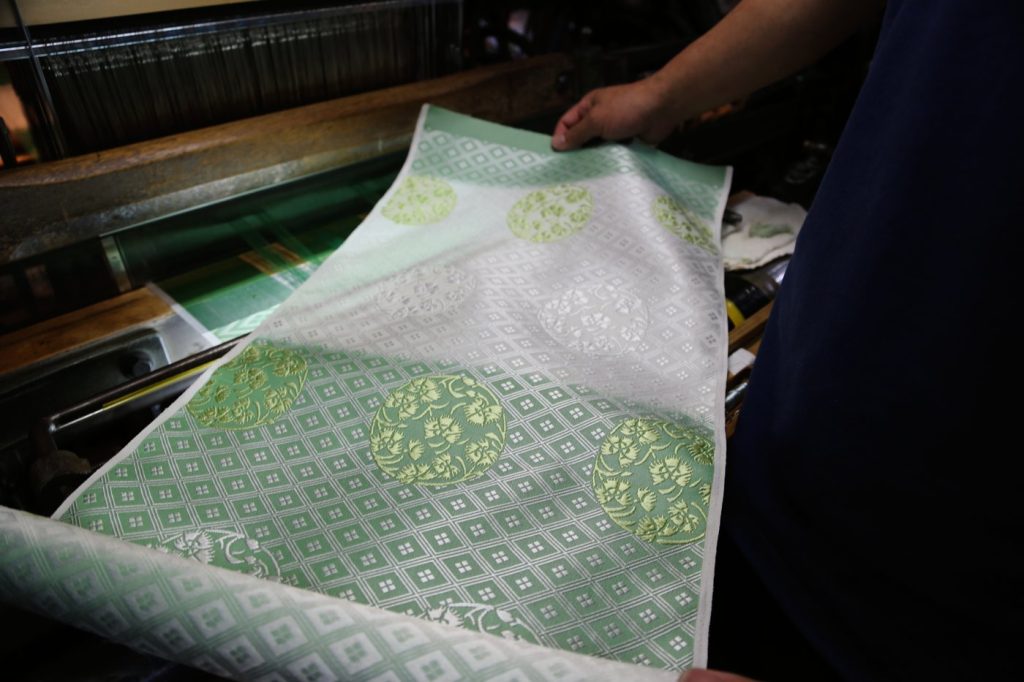KYOTO, Japan - Nishijinori, the ancient and intricate weaving technique used for kimonos, is embracing innovation through the incorporation of artificial intelligence (AI). This traditional craft, which is deeply rooted in the history of Kyoto and has connections to "The Tale of Genji" from the Heian era over a thousand years ago, is facing unprecedented challenges. With a significant drop in demand for kimonos as modern lifestyles evolve, the future of Nishijinori hangs in the balance.
At the forefront of this endeavor is Hironori Fukuoka, the fourth-generation owner of Fukuoka Weaving, located in Kyoto's historic Nishijin district. Fukuoka is committed to preserving the art form handed down by his father while adapting it to contemporary needs. He has expressed his determination to leave a lasting legacy: "I want to leave the legacy what my father has left for me," he stated in his traditional but aging workshop amidst the timeless beauty of Kyoto's temples and gardens.
Fukuoka's exploration into the collaboration of tradition and technology includes a project that employs AI to enhance the creative process of Nishijinori. Partnering with Sony Computer Science Laboratories, the initiative aims to leverage AI's capabilities in suggesting designs while retaining the essential human touch in production. "Our research stems from the idea that human life gets truly enriched only if it has both what’s newly innovated and what never changes," explained Jun Rekimoto, chief science officer at Sony CSL, emphasizing the complementarity of AI and traditional craftsmanship.
In a practical application of AI, Fukuoka's workshop utilizes advanced looms to produce traditional patterns that are well-suited for digital analysis. The AI is trained on existing Nishijinori designs and can quickly generate new suggestions, providing a fresh perspective. Interestingly, while some AI-generated patterns intrigue Fukuoka, he maintains a discerning eye, often favoring those that incorporate traditional motifs in innovative ways. One of the most notable AI suggestions involved a modern design with black and orange that suggested a tropical theme.
The collaboration has already yielded a kimono, featuring a soft green hue, although it is not yet available for sale. Traditional Nishijinori kimonos can command prices as high as one million yen (approximately $6,700), but the current generation of Japanese consumers increasingly opts to rent kimonos for special occasions, further complicating the art's preservation. The process of wearing a kimono also poses challenges, requiring considerable time and assistance, which adds to their declining accessibility.
Dr. Lana Sinapayen, an associate researcher at Sony CSL, has emphasized the importance of assigning creative roles to AI while keeping skilled artisans in the leading roles of the crafting process. "My goal was to use AI in assistant roles, not leadership positions," she articulated, highlighting the potential for AI to alleviate mundane tasks and support the creative endeavors of human artists. Even though digital technologies cannot replicate all the color gradations of Nishijinori, AI can optimize how these nuances are captured in a digital format and enhance our understanding of traditional artistic techniques.
This application of AI is part of a broader trend as artificial intelligence increasingly finds its way into various sectors, including crafts and the arts. A study indicated that the integration of AI in creative domains could liberate time for human imagination and creativity, even as Japan remains relatively cautious about fully embracing technological change compared to Western nations.
As the fusion of tradition and technology continues to develop, the Nishijinori craft stands at a crossroads. While AI presents exciting possibilities for innovation, its role remains supportive, ensuring that the intricate artistry that has defined Nishijinori for centuries continues to thrive in a modern context.










